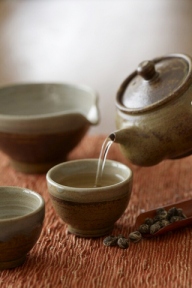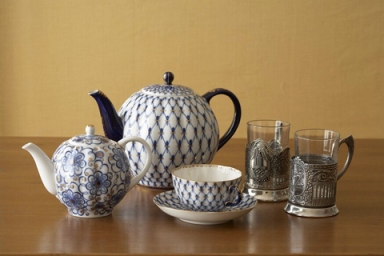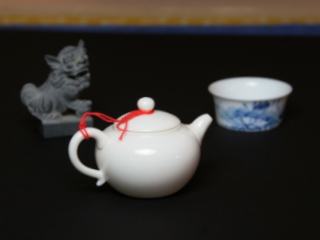 We are frequently asked about what is meant by the idea of re-steeping tea. Increasingly, tea drinkers are aware of the fact that some teas can be re-steeped, but many are not sure exactly what it means or if it applies to all teas or even how to go about it. (Before we begin to address this topic let me say that everything said here refers to the type of tea that we sell – premium loose-leaf tea – you will not get these results from supermarket or teabag teas).
We are frequently asked about what is meant by the idea of re-steeping tea. Increasingly, tea drinkers are aware of the fact that some teas can be re-steeped, but many are not sure exactly what it means or if it applies to all teas or even how to go about it. (Before we begin to address this topic let me say that everything said here refers to the type of tea that we sell – premium loose-leaf tea – you will not get these results from supermarket or teabag teas).
This is what our customers frequently ask us:
• which teas can be re-steeped?
• how many times can tea be re-steeped?
• what is the best way to re-steep tea?
But is re-steeping as simple a concept as just adding more water to the teapot and re-using the same tea leaves?
No, but as with most in-depth topics, there is no 30-second answer.
To really understand this topic and be able to re-steep teas with the best results, we believe that tea drinkers should:
• be familiar with which classes of tea ( green, yellow, white, oolong, black and heicha) are best for re-steeping.
• develop an understanding of the variation in tea leaf size in different teas within each class and how the size of the leaf responds to steeping/re-steeping. Not all leaf reacts the same way in water nor gives the same results as another type of tea.
• realize that the size of your teapot will affect the ratio of leaf to amount of water and the resulting character of the tea in your cup and on the ability to successfully re-steep the tea.
• understand that for all tea leaf there is an optimum amount of total time ‘ in the water.’ But how one approaches this will yield quite different results.
• experience the way that tea will differ in taste when steeped/drunk and re-steeped using Asian tea steeping methods versus Western tea steeping methods. Tea steeped by each method is quite different in character, and once one becomes familiar with the difference, it becomes easy to appreciate how it is that the Asian method is better suited for re-steeping tea.
Here is our advice on this topic, beginning with the all-importance difference between Asian-style tea steeping and Western-style tea steeping.
• Asian-style tea steeping = MULTIPLE STEEPINGS
This is achieved by steeping tea in small teapots or tea vessels that have a maximum capacity of 4 or 5 or 6 ounces.
A substantial quantity of tea leaf is placed in these tea vessels – usually enough to fill the vessel half-full – and a small quantity of water is added to fill the tea vessel to capacity.
The tea is steeped for only for 20,30, 45, etc seconds, and then poured into cups and drunk.
The leaf will be steeped again in a similar manner and all the tea drinkers will be able to enjoy the flavor of the tea as it changes in each re-steeping.
The tea will continue to be re-steeped until the leaf is exhausted of flavor.
This is not a matter of frugality but a tea steeping method that draws the best flavor from the tea.
Depending on the tea in question and the size of the teapot and the amount of tea/water and the steeping time, etc, some tea can be re-steeped as many as 3 – 15+ times.
All aspects of this method of tea steeping work together to allow the tea leaf to slowly release the flavor locked within the dried leaf over a series of multiple steepings.
This method uses basically twice as much tea to less than half as much water as Western-style tea steeping.
Each successive steeping of tea will taste full and rich and slightly thick – not watery or thin – until the leaf eventually becomes exhausted of flavor.
• Western-style tea steeping = A SINGLE STEEPING
This is the method of tea steeping that is familiar to most Westerners.
Large teapots with a capacity of 24 or 32 ounces are used, and a small measure of 4 -5 teaspoons of tea is added to the teapot.
The teapot is filled to capacity with 24 – 32 ounces of water and the tea is steeped for 4 or 5 minutes.
The leaf is not customarily re-steeped, as this ratio of quantity of water to leaf exhausts the goodness of the leaf in a single steeping.
Essentially Western-style tea steeping uses half as much tea and more than twice the amount of water than tea steeped Asian-style.
Most tea re-steeped in this manner, especially oolong and Pu-erh, will taste thin and watery in comparison to that which is steeped Asian-style in a smaller vessel when less water/more leaf is used.
 For those who wish to read about steeping tea, please refer to: Steeping the Perfect Cup of Tea on pages 29-39 of our book The Tea Enthusiast Handbook (Ten Speed Press, 2010) or our Tea 101 Tutorials on our website: www.teatrekker.com/steeping-tea
For those who wish to read about steeping tea, please refer to: Steeping the Perfect Cup of Tea on pages 29-39 of our book The Tea Enthusiast Handbook (Ten Speed Press, 2010) or our Tea 101 Tutorials on our website: www.teatrekker.com/steeping-tea
Which teas to re-steep and the tea vessels to Use
Not all teas re-steep as well as other teas, and not all teas are selected for long tea sessions among friends at home or in a teahouse. Chinese oolong and Pu-erh teas are the best re-steepers, followed by green and white tea from China, Japan and Korea. Large leaf China blacks such as Yunnans and some eastern China blacks re-steep well too, as do our large leaf hand-rolled Nepal black teas. But we find other black teas from Africa, India and Sri Lanka to be disappointing re-steepers.
Why? Because teas that re-steep successfully are whole-leaf teas with large leaves or buds that have abundant surface area. Also, Chinese teas are hand-plucked teas, and premium Chinese teas are made from unique tea bush cultivars that are indigenous to their particular regions. The nature of these teas, coupled with a small teapot and an understanding of the importance of the ratio of leaf to water and a short steep time is the reason that these teas are so successful for re-steeping. Teas that are fine-cut and made of chopped leaf become exhausted of flavor early on in the steeping process.
Oolongs and Pu-erh teas are the teas that are drunk during long tea tasting sessions with many re-steeping. Green tea may be carried around and replenished with water during the day by taxi drivers, workers, students, etc, but an afternoon or evening spent drinking tea in a teahouse is usually spent exploring an magnificent oolong or Pu-erh. These teas are often steeped in an Yixing or other type of un-glazed clay teapot or in a porcelain gaiwan.
Consider one of the following Asian tea vessels for steeping your Chinese, Taiwanese or Korean tea.
For oolongs and Pu-erh, the only way to obtain the expected taste characteristics and re-steepability is to use one of these vessels.
• porcelain gaiwan (3-6 ounces)
• small un-glazed China Yixing clay teapot (3 – 6 ounces)
• small un-glazed Japanese Tokoname teapot (5 -12 ounces)
• small porcelain teapot (3 -5 ounces; 12-16 ounces)
This steeping methodology will give you remarkable flavor each time and the opportunity to re-steep the leaf several times. This may not be a practical way to steep tea on workday mornings, but on weekends or when relaxing with friends this is a wonderful way to experience the flavor nuances of tea and enjoy the appreciative aspects of leisurely tea drinking.
Teas that we re-steep
• Green tea: we always re-steep green teas, usually 2- 4 times, depending on the tea. Some teas diminish in flavor significantly when re-steeped, others hold up well. Japanese green tea will have a stronger flavor in subsequent re-steepings than China greens.
• Black tea: we re-steep most Chinese black teas and our large-leaf Nepal black teas, too. Even then, some black tea will re-steep more successful than others. We always re-steep: large-leaf Yunnan blacks; particularly tippy dian hong; Bai Lin; Golden Monkey and other Panyang Congous; large-leaf Keemuns such as our Longevity and Mao Feng; Zheng Shan Xiao Zhong and Lapsang Souchong
• Oolongs, Pu-erh and other HeiCha: re-steep always! You are wasting tea and losing the opportunity for the tea to show you its different facets of flavor if you do not. We always rinse these teas, sometimes discard the 1st infusion, and then re-steep as many times as the tea has flavor to give: 6,8,12, or more re-steepings.
• White tea: we think that leaf/bud white teas such as Bai Mu Dan re-steep the best. Also, large-bud Yunnan white teas hold up well, too But if subtlety is what you seek, then you may find 2 -3 additional steepings of Yin Zhen to be nirvana in a teacup.
Think about the chemistry behind steeping tea
Steeping leaf tea is simple chemistry. It is using leaf tea (of varying sizes with differing amounts of surface area) that is submerged in hot water for a determined amount of time. The tea leaves release their soluble solids into the water and produce the tea liquor that we enjoy drinking.
The size of the leaf and its surface area, combined with the total amount of time ‘in the water’ determines the amount of taste/body/astringency in the tea liquor. Total time in the water means all the time that the leaf is exposed to the water – primary steeping as well as subsequent re-steepings.
For example, total time in the water could be one 5-minute steeping or three 2-minute (approx) steepings. While the total quantity of leaf steeped is the same, the ‘taste’ and character difference of the tea in the cup will be quite different depending on how the time in the water is allocated.
Try it and see what you think.
We view re-steeping tea as a gift of the leaf and each tea is unique – there are no hard and fast rules regarding how many re-steepings one should expect to obtain from any given tea – only suggestions and thoughts to share about what to do and ways to do it.
Essentially, we suggest that tea enthusiasts experiment with whatever tea they are steeping by re-steeping it a 2nd time. If it is tasty – great! If it is not, then there is no harm done.
Tea Information and photographs shared on Tea Trekker’s Blog is original material protected by copyright. Please ask permission before referencing our work.

